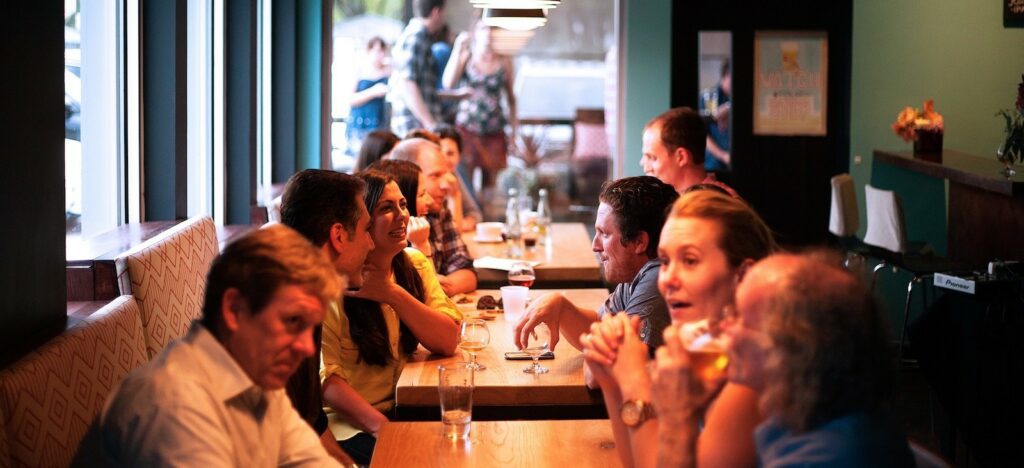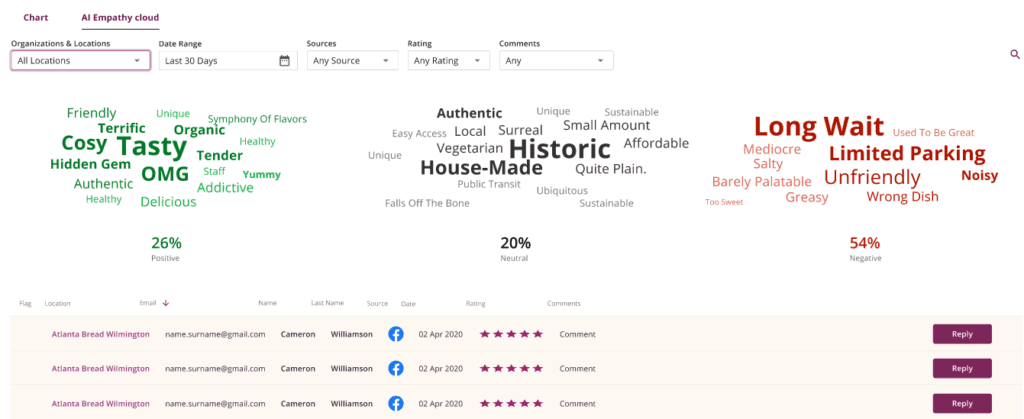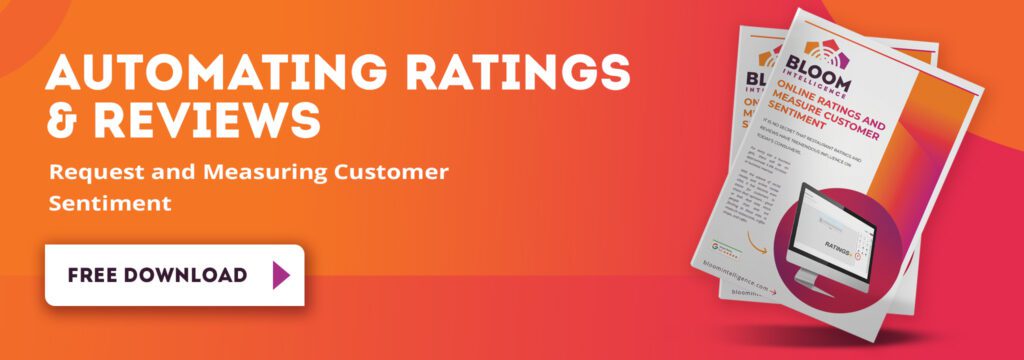Just like any other business, restaurants need to attract and retain customers with creative and effective marketing and operations strategies. Fortunately, there are many ways that your restaurant can utilize a restaurant marketing platform to establish a strong connection with guests — from online reservation and ordering systems to WiFi marketing and artificial intelligence.
Here, we will explore some of these options for you so that you can make informed decisions about how to best promote your establishment’s offerings and run a successful business without breaking the bank.
This article will start by discussing why restaurant marketing is important in general before diving into specifics about what type of restaurant marketing software restaurants should be looking at when developing their own restaurant marketing strategy.
Why is Restaurant Marketing Technology Important?
 Marketing strategies are different for every company, depending on what they are offering, what their target market is like, where they are located geographically, and many other factors.
Marketing strategies are different for every company, depending on what they are offering, what their target market is like, where they are located geographically, and many other factors.
However, some of the most common ways that restaurants can use technology to market themselves include online reservation and ordering systems, digital menus, email marketing, and newsletters, online ratings and reviews, social media accounts, and WiFi-assisted marketing.
It is important that your restaurant create an effective presence on the internet and email as it is more than just a useful tool for communication; it has become a place where consumers expect to be able to interact with companies and brands they are interested in, and it is the best way to allow you to communicate with your target market.
When developing your marketing strategy, consider each of these suggestions below as a starting point for how your restaurant can utilize restaurant marketing technology to strengthen relationships with customers both new and old.
1. WiFi Marketing and Remarketing Tools
Using restaurant marketing software like Bloom Intelligence, restaurants use their WiFi to track customer behavior and create detailed customer profiles stored in a CRM (more on CRMs later).
As you build your customer database, you can send out marketing messages based upon user behavior, such as their number of visits, or dwell time, and demographics such as birthday, gender, or postal code.
What makes this incredibly time-saving is that these messages are sent automatically whenever a visitor meets your specified criteria.
Not only can you automate your marketing messages, but you will also be able to identify lost customers, improve your online ratings and reviews, and easily identify customer sentiment – all automatically. Then, you can take action to improve marketing and operations to get more new customers, improve your restaurant reputation, and keep customers coming back.
To learn more about WiFi marketing and how it can improve your revenue, visit our WiFi marketing automation page.
2. POS Systems
A restaurant POS (point-of-sale) system is a computerized cash register that includes software and hardware to manage the day-to-day operations of a restaurant. It typically includes:
- A touch screen monitor for ordering, paying, viewing menus and specials, etc.
- A card reader or bar code scanner
- An electronic receipt printer for printing customer’s receipts.
These systems are often connected with accounting software as well as inventory management systems.
POS systems also offer a great way to make your customer experience better. For instance, quality POS’s offer the ability to set up online ordering, making take-out and delivery service quicker and easier for your customers.
They also offer ways for dining customers to pay through a tabletop touch-screen monitor or through a smartphone app. This can bring down table turn times and make the customer experience more engaging and satisfying.
Some POS systems will automatically update the digital menu if certain items are 86’d and unable to be served. Again, improving your customer experience.
3. Digital/Online Menus
Many restaurant menus are getting a digital makeover.
They’ve been around for decades, but now they’re starting to appear in restaurants everywhere. The idea behind the digital menu is that it helps streamline and simplify ordering while also saving time and money on printing costs.
Now, diners can look at their phone screens for all the information they need about menu items and prices. Diners can also use these screens to order food or drinks without waiting for service or flagging down wait staff.
The digital menu is also more environmentally friendly. Likewise, they are touchless, which many consumers now find favorable.
4. Contactless Technology
 Not only do digital menus provide a contactless experience, so too do contactless payment systems.
Not only do digital menus provide a contactless experience, so too do contactless payment systems.
Contactless payments provide convenience for both customers and merchants who want an easier way to pay without worrying about carrying cash or cards
Additionally, they offer increased security with no need for signatures or PIN numbers. Most experts say that contactless is just as secure, if not more so than traditional payment methods.
Touchless technology eliminates the risk of spreading germs and bacteria by touching something contaminated.
It provides an added layer of protection against viruses like Covid-19 because it reduces human contact in public spaces such as restaurants.
5. Online Reservation Systems
Online reservation systems are used by many restaurants as an easy way for customers to find out if there are any open tables at restaurants on certain dates, at certain times.
Today, more than ever before, people are relying on these systems as they find it easier to book their reservations without having to call several different restaurants.
As these online reservation systems are becoming more popular, restaurateurs are faced with the challenge of making their own reservation systems stand out from the rest.
The restaurant industry is one that caters to heavy competition to be at the top. Restaurateurs use various methods to get patrons to come back again and again. Offering good food and service is only part of the equation.
One way to do this is by making their online reservation system appear very attractive and simple to use.
6. Email Marketing/CRM Databases
A restaurant CRM database is a collection of customer profiles that can include online & offline behavior, demographics, email, phone numbers, income, zip codes, transactions, and even visit history.
Savvy restauranteurs automatically collect, aggregate, and clean customer data into restaurant customer databases to unlock customer insights and increase customer lifetime values through marketing automation.
As discussed above, automating marketing messaging based upon customer behavior and demographics can not only save you time but can also increase customer lifetime values by keeping your customers coming back.
The data can be analyzed by a WiFi marketing platform like Bloom Intelligence to identify lost customers and send them messaging to get them to come back through your doors. Bloom users are seeing up to 38% of their lost customers return using this powerful method.
You also can sort and filter the database. You can create different customer personas based upon behavior and demographics, and then create separate, segmented email marketing campaigns with messaging that resonates better with each persona.
According to ClickZ, when using proper targeting, marketers can drive 3x the revenue per email as compared to broadcasting. Likewise, Mailchimp found that segmented email campaigns also earn 100.95% higher clickthrough rates as compared to non-segmented email campaigns.
On the operations side, having access to a CRM database and metrics like daily traffic, dwell times by hour, customer frequency, customer rating results, and much more allows you to see data you could not see before that are critical to operational success.
As a result, this transparency into customer behavior and sentiment gives you data to optimize staffing, ordering, and discover problematic trends before they become a larger issue.
7. Social Media Management Tools
 Restaurant social media management should be a crucial part of your strategy for success.
Restaurant social media management should be a crucial part of your strategy for success.
It’s not enough to just have a great restaurant, you need to be able to tell people about it and get them in the door. Having an online presence will help you do that.
Whether you’re using Facebook or Instagram or any other platform, your goal should be the same: make sure people know who we are and what we offer so they can visit us when they want a great meal.
You don’t need any special skills or knowledge beyond basic computer literacy and creativity to create compelling content for your social media channels. The main thing is that you’re consistent with updating posts regularly, so people always see fresh content from your company on their feeds.
There are tools available, such as Hootsuite and Sprout Social, that allow you to enter multiple social media posts on multiple social media channels at once, and then schedule them to automatically post at various future dates and times.
You can not only schedule the posts all in one platform, but you can monitor them and see reporting on each post in real-time. This allows you to optimize your social media messaging over time.
8. Online Ratings & Reviews Management Tools
Did you know that an increase of just one star can increase your revenue by up to 9%, and an increase of just one-half star would likely fill your seats during peak business times?
Ratings and reviews management is more important now than ever, as consumers are flocking to sites like Google and Facebook to research ratings and reviews prior to making a dining decision.
Therefore, it is important to not only monitor your ratings closely, but to actively ask for ratings from your customers, and respond to all of them – positive or negative.
The Bloom Intelligence platform provides a way to automate the process of asking for ratings, and gives you the ability to monitor them and respond to them all in one easy-to-use platform.
You can also use Bloom’s ratings widget to consolidate and showcase all your online reviews on your website as social proof that ultimately will drive more customers into your business.
This saves you time and money, all while passively and consistently gathering new ratings, and working to improve your online ratings and reviews by understanding customer sentiment. Then, you can use that information to optimize your marketing and operations.
9. Artificial Intelligence
Bloom’s restaurant marketing software also uses artificial intelligence (AI) to analyze your online customer reviews.
Using AI, the system will “read” your online Google, Bloom, and Facebook reviews and create custom word clouds showing you positive, neutral, and negative customer sentiment.
In the word cloud, the larger the word, the more times it has been used in reviews.
This gives you a very quick way to see and understand customer sentiment. Then, you can work to make changes to your menu, marketing, and operations to turn negative sentiment into a positive.

In the image above, green is positive, grey is neutral, and red is negative.
You can easily see what your customers like about your place of business, and what could use improvement. For instance, using the example above, you can see that customers enjoy your food and cozy atmosphere, but are frequently upset by your limited parking and long wait times.
In Conclusion
Restaurant marketing technology is ever-evolving, but the good news is that brick-and-mortar locations are now getting the same tools that have turned online companies such as Amazon into business powerhouses.
You could argue that restaurant marketing technology will enable a new gold en age of restaurants where you now can use technology to expand your distribution channels (online ordering, third-party delivery, curbside pickup, ghost kitchens, and much more) plus have the tools to maximize your revenue per customer using automation, personalization and artificial intelligence in ways that were just not possible before.
Based on the list above, perhaps the most powerful way to boost revenue, improve online ratings, bring back lost customers, and improve customer lifetime values – all while saving time and money – is to invest in a restaurant marketing platform like Bloom Intelligence.
The real question is, can you afford not to start investing in restaurant marketing technology?
If you would like to see Bloom in action, and how easy it is to use, call us today to schedule a demo, or schedule a demo online here. It’s time to watch your business bloom!






.svg)